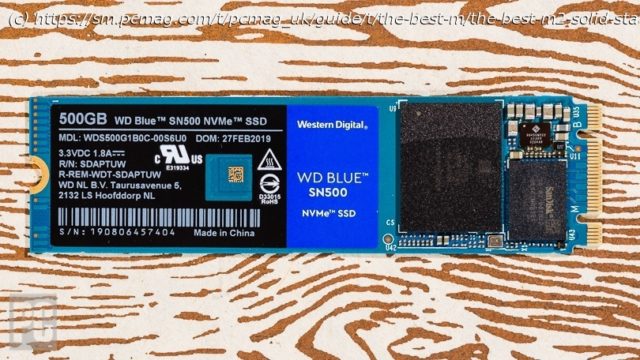Thanks to the «gumstick» M.2 format, SSDs have been shrinking—and getting a lot faster, too. Here’s how to buy the right M.2 SSD, along with deep-dive reviews of today’s top models.
Under the hoods of the skinniest laptops (and in the hollows of the latest desktop-PC motherboards), solid-state storage has undergone a transformation. Even if you’re a close observer of all things tech, it’s understandable if you didn’t even realize it was happening.
That’s because the whole idea is to make the storage hardware itself close to invisible. Over the last few years, solid-state drives (SSDs) have migrated from the slab-like shapes of familiar hard drives into little sticks of memory that offer much the same capacities. And they have picked up speed along the way.
Below you’ll find our top-rated M.2 SSDs, followed by a detailed guide to everything you need to know about selecting the best one for your PC. We’ll conclude with a side-by-side spec breakout table of our top picks.
The traditional SSD that you buy and install in a desktop PC, or in place of a hard drive in a laptop, uses what’s known as the «2.5-inch drive» form factor. (In actuality, the drives are about 2.75 inches wide.) These SSDs have the same dimensions that laptop-style hard drives do. SSD makers adopted this standard size to make SSDs compatible with existing laptop designs. (They could configure laptops with the choice of a hard drive or an SSD without any retooling.) Desktop PCs, meanwhile, could accommodate SSDs of this size with little fuss. You could mount them in a 3.5-inch drive bay using a simple bracket, or even just using alternate mounting holes in those same spots. Over time, too, desktop PC chassis have evolved to gain their own bays and mounting points for 2.5-inch drives.
However, from an engineering point of view, SSDs didn’t need to be that big. The enclosure an SSD comes in has a lot of dead space inside. It’s designed in that 2.5-inch size and shape to make the drive fit into those existing bays. So when mobile-device designers, challenged with slimming down laptops and tablets, reassessed this issue, the consensus was clear: The bulky 2.5-inch form factor, eventually, would have to go.
At the core, an SSD is just a thin circuit board studded with flash-memory and controller chips. Why not design around that? Thus the M.2 form factor was born. But we’re getting ahead of ourselves.In the Beginning, There Was mSATA…
The first attempt was a new form factor called mini-SATA, or mSATA. The boiled-down essence of an SSD with the shell removed, an mSATA drive is a bare, rectangular circuit board. (Most mSATA drives relevant to upgraders measure about 1 by 2 inches.) mSATA drives fit into a special slot in a laptop’s logic board or on a PC motherboard. As the name suggests, the slot is a conduit to the Serial ATA bus in the system. The interface on the drive end is an edge connector on the PCB, as opposed to the usual SATA cabling. The mSATA drive also draws all the power it needs through the slot.
By being reliant on SATA, mSATA drives gained all of the advantages and limitations of that interface, including the upper speed limit of SATA 3.0, the latest revision of Serial ATA. That’s not a bad thing, mind you. mSATA was also unusual in that it piggybacked on an existing connector, known as Mini-PCI, often used for installing small onboard components such as compact Wi-Fi cards.
Now, mSATA drives still linger on the market, primarily because some laptop models adopted the form factor years back, and residual demand exists as capacity upgrades. But it’s definitely a fading form factor, and mSATA saw only slight adoption on desktop systems.
Even in mSATA’s heyday, though, a replacement was in the works. During development, it was known as NGFF, for «Next-Generation Form Factor,» a name that still lingers here and there. As it took shape, though, it took on its current, final name: M.2. The drives would be smaller, potentially more capacious, and, most important, not necessarily reliant on SATA.So, What Is an M.2 SSD?
M.2 drives are as utilitarian as upgrades come: They look like sticks of gum studded with NAND modules and a controller chip. («NAND» is the generic term for the flash-memory chips that make up the actual storage on the SSD; the term refers, technically, to the type of logic gates used in the underlying memory structure. See our primer Buying an SSD: 20 Terms You Need to Know for more SSD lingo explained.)
The key thing to remember about M.2 is that it is a form factor, a shape. The bus—the data pathway over which the data travels to and from an M.2 drive—is distinct from M.2 itself and can vary. And it can make all the difference.
But first, the shape issue. Any M.2 drive you are looking at will be labeled with a four- or five-digit number as part of its specifications or model name. It’s a measurement, in millimeters: The first two numbers define the drive’s width, the second two the length.
The market has settled on 22mm wide as the standard for desktop and laptop implementations; the aftermarket drives available and the accessible slots we’ve seen have all been that width. The most common lengths we’ve seen are 80mm («Type-2280») and 60mm («Type-2260»). The lengthier the drive, the more NAND chips you can tend to stuff on it (plus, M.2 drives can be single- or double-sided), though know that length isn’t an absolute measure of capacity.42mm, 60mm, and 80mm M.2 SSDs
Now, why does length matter? Fit, especially in the case of laptops. Most desktop motherboards with M.2 slots have screw-mounting points for several lengths of M.2 drive (usually, 80mm, 60mm, and 42mm), so length hasn’t been an issue there. But it’s a different matter in a laptop with a user-accessible M.






